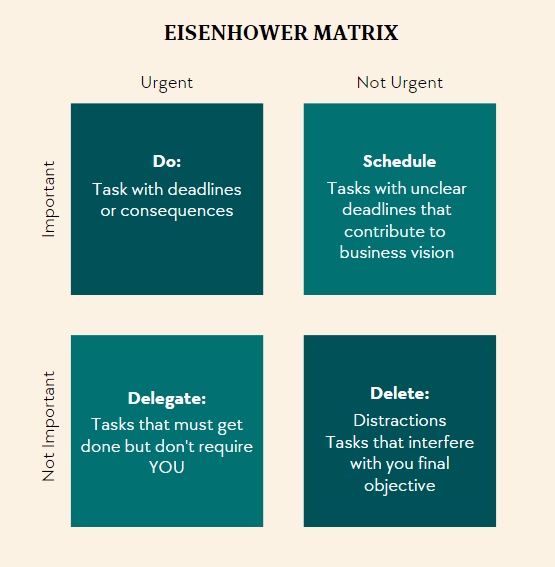Strategic thinking and setting of goals are two essential skills in today’s fast-paced world. Whether you’re an entrepreneur, a solopreneur, or a professional in any field, mastering Strategic Thinking and Setting of Goals can significantly enhance your ability to make decisions, solve problems, and achieve your objectives.
In my previous post, I discussed how to start a business in 2023. If you’ve read it, you’ll find that Strategic Thinking and Setting of Goals are integral parts of launching and running a successful business. In this post, we will delve deeper into these topics, exploring their importance, the processes involved, and how to effectively implement them in your personal and professional life
Understanding Strategic Thinking
Strategic thinking involves making decisions and plans with a clear, long-term direction in mind. It’s about seeing the big picture, understanding the broader context, and anticipating potential challenges and opportunities. Strategic thinking plays a crucial role in decision-making and problem-solving, as it allows you to consider various factors and potential outcomes before deciding on a course of action. The benefits of strategic thinking are manifold. It can lead to improved decision-making, increased adaptability in the face of change, and more effective allocation of resources.
In the next sections, we will discuss the process of setting goals and the strategies and techniques that can be used to set effective goals. Stay tuned!
The Process of Setting Goals
Setting goals is a critical step in achieving success in any endeavor. Goals provide direction, motivation, and a clear way to measure your progress. However, not all goals are created equal. To be effective, goals should be aligned with your organization’s mission and vision. They should also be SMART – Specific, Measurable, Achievable, Relevant, and Time-bound. This ensures that your goals are clear, realistic, and directly contribute to your long-term objectives.
Strategies and Techniques for Setting Goals
There are several strategies and techniques you can use to set effective goals. One such strategy is backward goal setting. This involves starting with your end goal and then working backward to identify the steps you need to take to achieve it.
Another technique is using Objectives and Key Results (OKRs). This is a goal-setting framework that encourages you to set ambitious goals and track your progress towards them using quantifiable measures.
Stretch goals are another effective technique. These are goals that go beyond what you think is possible. They push you out of your comfort zone and can lead to significant growth and innovation.
As a solopreneur, I’ve found these techniques incredibly useful in my own goal-setting process. For example, when building my business, I used Trello (completely free!) to organize and prioritize tasks. This allowed me to clearly see what needed to be done and when, making the process of working towards my goals much more manageable.

In my journey as a solopreneur, I’ve found the Kanban board to be an invaluable tool. It’s a visual system for managing work where each task is a card that moves through columns representing stages of a process – “Backlog”, “Next”, “Doing”, “Done”, and “Complete”. I use Trello, a free tool, to implement this system.
It’s a simple yet powerful way to organize tasks, track progress, and identify bottlenecks. Using a Kanban board on Trello (which I set as the image above) has made my goal-setting process much more manageable and efficient.
The Eisenhower Matrix: A Powerful Tool for Goal Setting
Another effective strategy for setting goals is using the Eisenhower Matrix. Named after Dwight D. Eisenhower, the 34th President of the United States, this tool helps you organize and prioritize tasks based on their urgency and importance.
The Eisenhower Matrix divides tasks into four categories:
- Do: These are tasks that are both urgent and important. They need to be done now and have clear consequences if not completed within a certain timeline.
- Schedule: These tasks are important but not urgent. They contribute to your long-term goals but don’t need to be done right away. You can schedule these tasks for later.
- Delegate: These tasks are urgent but not important. They need to be completed now, but they don’t affect your long-term goals. You can delegate these tasks to other members of your team.
- Delete: These tasks are neither urgent nor important. They are distractions that get in the way of accomplishing your goals. You can delete these tasks.
The Eisenhower Matrix is a powerful tool that can help you manage your workload more efficiently. By distinguishing between urgent and important tasks, you can prioritize your work and focus on the tasks that truly matter.

Case Studies
As a solopreneur, strategic thinking and goal setting are integral to my success. When I started building my business, I had to be my own boss, which meant setting my own goals and making strategic decisions. I used Trello to organize my tasks, which helped me prioritize and manage my workload effectively.
Periodic reflection and review were also crucial. I would regularly assess my progress and adjust my goals as needed. This flexibility allowed me to adapt to changes and overcome challenges that arose along the way.
Another key aspect of my strategy was resource management. I had to consider what resources I had at my disposal and what tasks I could outsource. This not only saved me time but also allowed me to focus on the areas where I could add the most value.
When outsourcing tasks or managing employees, it’s important to ensure they have everything they need to complete their tasks. There were times when I was so busy that I forgot to assign tasks, which resulted in wasted time. To avoid this, I made sure to regularly check in with my team and provide clear instructions.
Challenges in Implementing Strategic Thinking and Setting of Goals
Implementing strategic thinking and goal setting is not without its challenges. You may face obstacles such as lack of clarity, difficulty prioritizing, or resistance to change. However, these challenges can be overcome with the right strategies.
One effective strategy is to ensure your goals are SMART. This makes them clear and measurable, which can help you stay focused and motivated. Another strategy is to regularly review and adjust your goals. This allows you to adapt to changes and keep your goals aligned with your overall strategy.
Conclusion
Strategic thinking and setting goals are not just buzzwords; they are essential skills that can significantly enhance your personal and professional success. By understanding what strategic thinking is and how to set effective goals, you can make better decisions, solve problems more effectively, and make the most of your resources. Remember, the key to successful goal setting is to ensure your goals are SMART, regularly review and adjust them, and prioritize effectively.
Whether you’re a solopreneur like me or a professional in any field, I hope this post has provided you with valuable insights into strategic thinking and goal setting. If you’re interested in learning more about these topics or want to stay updated with the latest news and updates, consider taking my AI mastery course or follow me on Twitter.
FAQ
Q: What is strategic thinking?
A: Strategic thinking is a process that involves making decisions and plans with a clear, long-term direction in mind. It’s about seeing the big picture, understanding the broader context, and anticipating potential challenges and opportunities.
Q: How should I set effective goals?
A: Effective goals should be SMART – Specific, Measurable, Achievable, Relevant, and Time-bound. You can also use tools like Trello, Monday, or MindMeister to help you organize and track your goals.
Q: What are SMART goals?
A: SMART goals are goals that are Specific, Measurable, Achievable, Relevant, and Time-bound. This ensures that your goals are clear, realistic, and directly contribute to your long-term objectives.
Hezi Hershkovitz
Latest posts by Hezi Hershkovitz (see all)
- The 7 types of Entrepreneurship: Which One Are You? - September 26, 2023
- Friend.Tech Strategies: Simple Profit Explosion - September 22, 2023
- Friend Tech Taxation: Unraveling the Colossal Implications - September 18, 2023
